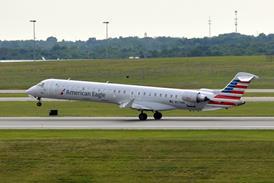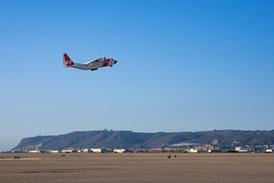GUY NORRIS / LOS ANGELES
Northrop Grumman has brought forward sonic boom reduction work which will be tested on a modified F-5E
Northrop Grumman plans to test a modified F-5E in 2002 that will demonstrate the effects of fuselage shaping on sonic boom mitigation, or reduction. This will be an accelerated part of the US Defense Advanced Research Projects Agency's (DARPA) Quiet Supersonic Platform (QSP) programme to develop low-sonic boom military and civil aircraft.

"This is one of the key enablers for efficient, long range supersonic flight," says Northrop Grumman QSP programme manager Charles Boccadoro, who adds the sonic boom reduction work was originally timed for Phase II of the technology validation programme starting next year. "However, the consensus was that it was better to move it forward a few months." The contract, valued at around $3 million, forms a "critical" part of QSP and, according to Boccadoro, its success is vital to the concept.
Northrop Grumman will develop a new forward fuselage for the F-5E. The new section will be shaped to spread the shock waves and minimise the chances of their coalescing. This reduces the peak overpressure caused by the onset and release of shockwaves generated as the aircraft passes through the air.
Boccadoro says the revised fuselage shape will be "somewhere between" radical and conventional, and adds that final decisions on the precise shape and materials will be made over the next four months. The lengthened forebody will stretch the F-5E by 1.3m to 15.7m.
A series of flight tests, expected to include up to 18 sorties, is planned to begin in July/August next year. Flights are expected to take place in the supersonic corridor over Edwards AFB, California, and will involve two F-5Es. The unmodified aircraft will overfly an array of ground-based pressure and sound sensors at speeds above Mach 1 to demonstrate the standard sonic boom, followed a few minutes later by the modified aircraft. "We're also doing trade studies to see if we will get some sort of mid-altitude data," he adds.
"For the first time we are going to get a 'flat top' or altered waveform on the ground. All previous sonic booms have produced 'N-waves' with sudden overpressure," says Boccadoro. There are two types of sonic boom: N-waves and U-waves. N-waves are generated from steady flight conditions and have a front shock with a rapid pressure rise to a positive peak overpressure which is followed by a linear decrease in the pressure, then a rear shock that returns the pressure to ambient. The U-wave is generated from manoeuvring flights and results in higher intensity U-shaped shock waves.
The tests involve Raytheon Aircraft, Eagle Aeronautics and Wyle laboratories, as well as Massachusetts Institute of Technology, Stanford University, the US Air Force Research Laboratory and NASA Langley.
Source: Flight International























